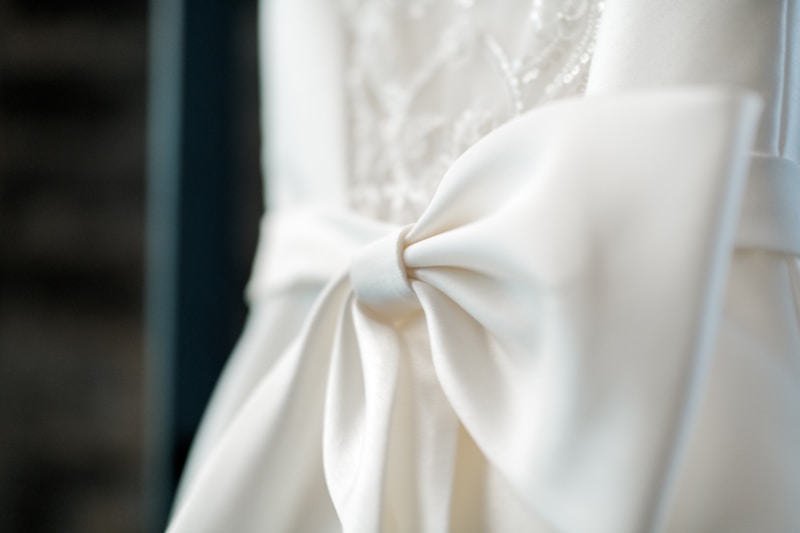Bridal Alterations: What You Need to Know for Your Perfect Wedding
Bridal Alterations: What You Need to Know for Your Perfect Wedding
Bridal Alterations: What You Need to Know
Your wedding day is one of the most monumental occasions in your life, and the right bridal gown can make all the difference. However, finding that perfect dress is only part of the journey. To ensure your gown fits flawlessly and enhances your beauty, understanding bridal alterations is essential. This guide will walk you through everything you need to know, providing insights into the process and helping you navigate this often-overlooked aspect of wedding planning.
What Are Bridal Alterations?
Bridal alterations refer to the adjustments made to your wedding gown to ensure a perfect fit. These modifications can include shortening the hem, taking in or letting out seams, adjusting the bustline, and more. Every bride deserves to feel confident in her dress, which is why alterations are crucial to achieving that perfect silhouette.

Why Are Bridal Alterations Important?
Bridal alterations are important for several reasons:
- Customization: Every bride's body is unique. Off-the-rack dresses are often made in standard sizes and may not fit perfectly. Alterations allow for customization to suit your individual shape and size.
- Comfort: A well-fitted gown not only looks better; it also feels better. You want to focus on enjoying your day rather than worrying about adjustments throughout your wedding.
- Confidence: When your gown fits perfectly, it boosts your confidence. You will feel beautiful and radiant as you walk down the aisle, making the experience even more memorable.
Types of Bridal Alterations
Understanding the different types of bridal alterations can help you communicate your needs effectively with your seamstress or tailor. Here are the most common alterations that brides may require:
| Alteration Type | Description |
| Hem Adjustment | Shortening or lengthening the hem of the gown to achieve the desired length. |
| Take In/Let Out | Adjusting the dress to make it tighter or looser around the bodice, waist, or hips. |
| Bustle | Creating a bustle allows the train of the dress to be lifted and secured for dancing. |
| Strap/Neckline Adjustment | Adjusting straps or changing the neckline for comfort and style. |
| Altering Lining or Boning | Modifying the lining or adding/removing boning for added support and structure. |
How to Prepare for Bridal Alterations
To ensure the alteration process goes smoothly, follow these preparation tips:
- Start Early: Begin the alteration process at least 2-3 months before your wedding day. This gives ample time for fittings and adjustments.
- Choose the Right Tailor: Look for a seamstress who specializes in bridal alterations. Their experience with various styles and fabrics can ensure quality work.
- Bring Your Accessories: Always bring along the shoes, undergarments, and any accessories you plan to wear on your wedding day to the fittings. This provides a more accurate representation for fittings.
- Be Honest: Communicate your concerns and preferences openly with your tailor. Being clear about your vision helps them achieve the best results.
The Fitting Process
Understanding the fitting process can alleviate anxiety. Here’s what typically occurs during your fittings:
First Fitting
During the first fitting, you will try on your gown to assess the overall fit. The tailor will take your measurements and pin areas that need adjustments. This is a great time to discuss any specific concerns and desired changes.
Subsequent Fittings
Depending on the complexity of the alterations, you may need two or three fittings. At each fitting, your tailor will evaluate the previous adjustments and make any necessary changes. Don’t hesitate to voice any concerns during this time; the goal is to make the gown fit you perfectly.
Final Fitting
The final fitting is typically one week before your wedding date when most alterations should be complete. This fitting will help ensure everything is perfect and aligned with your vision.
Common Questions About Bridal Alterations
Brides often have questions when it comes to alterations. Here are some common inquiries:
How Much Do Bridal Alterations Cost?
The cost of bridal alterations can vary significantly based on the complexity of the work needed. Simple alterations like hem adjustments can range from $50 to $150, while more complex adjustments may cost upwards of $300. Always discuss pricing upfront with your tailor to avoid surprises.
Can I Alter a Vintage or Heirloom Dress?
Yes, vintage or heirloom dresses can often be altered, but it requires a skilled tailor experienced with delicate fabrics. Be sure to communicate the significance of the dress to your tailor so they can handle it with care.
What Should I Do If I Lose Weight Before the Wedding?
If you lose weight before your wedding, inform your tailor as soon as possible. They can adjust your gown accordingly, but be mindful of timing as it may require additional fittings close to the wedding day.
Is It Necessary to Have a Bustle?
A bustle is not a requirement, but it is often recommended if your gown has a long train. It allows for easy movement and dancing without tripping on your dress.
Conclusion: Embrace the Alteration Process
Bridal alterations play a pivotal role in ensuring you look and feel your best on your wedding day. By understanding the basics of the alteration process, you can navigate this crucial aspect of wedding planning with confidence. Remember to start early, communicate openly with your tailor, and embrace the journey toward achieving the gown of your dreams. Your wedding day is a celebration of love, and with the right fit, you will shine like the bride you are meant to be!
Don't forget: bridal alterations are an investment in your happiness and confidence for one of the most important days of your life. Start planning early, trust your expert seamstress, and, most importantly, enjoy the process!
